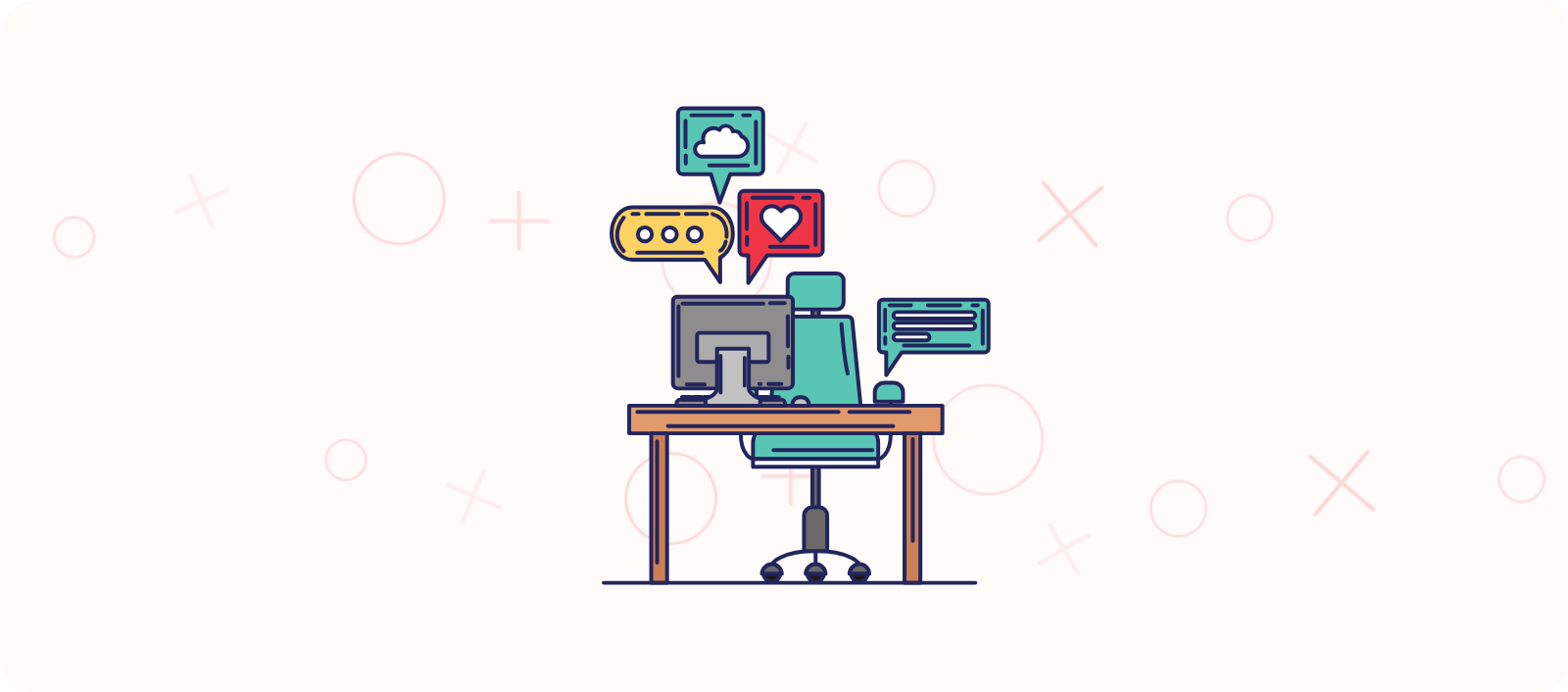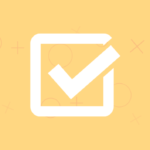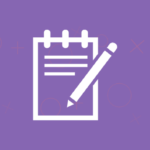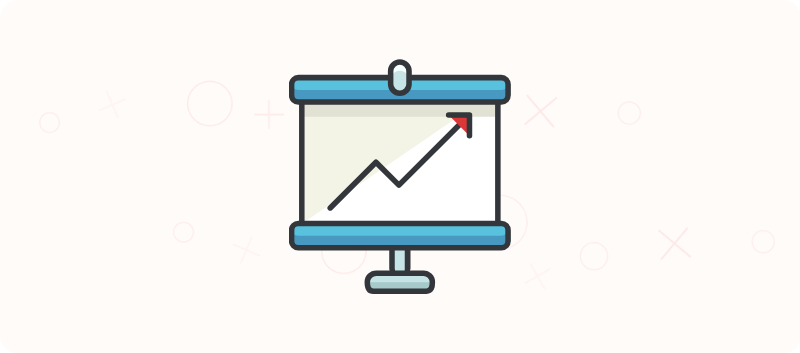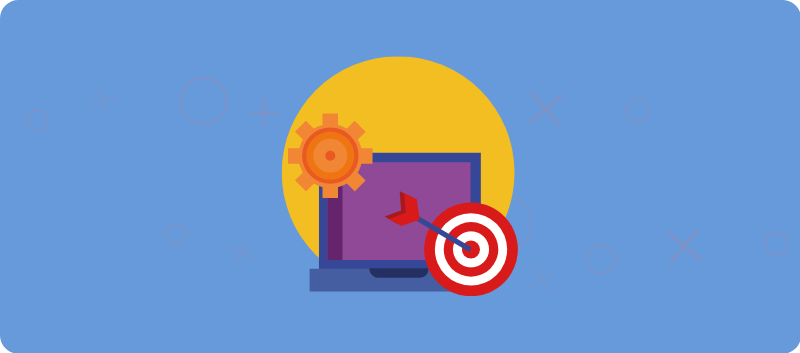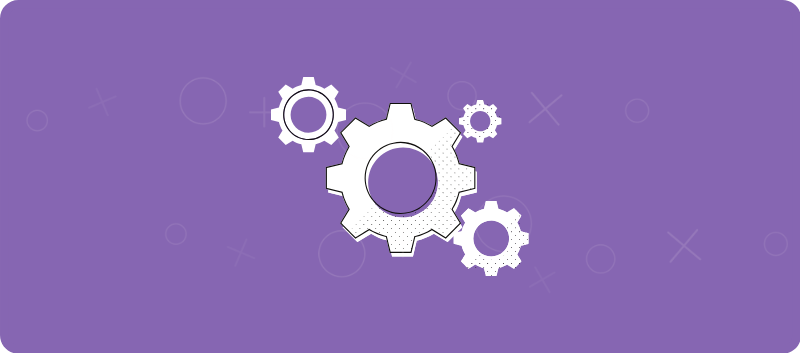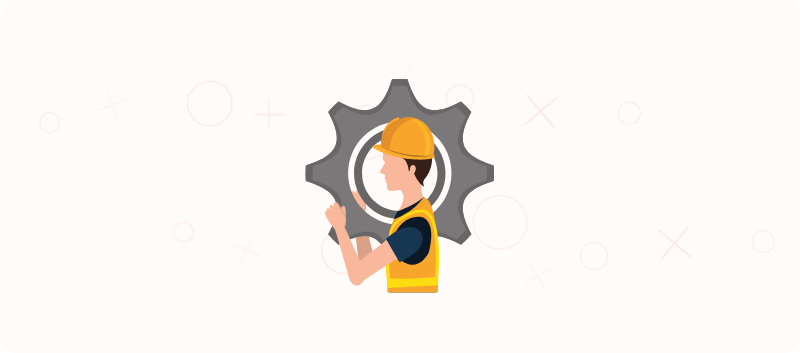15 Workplace Distractions & How to Eliminate Them
Distractions are everywhere. Emails. Pinging messages. Television. Text messages. The list goes on.
In the workplace, where focus goes hand in hand with output, distractions can lead to missed deadlines, mistakes, and miscommunications. A 2018 Udemy Workplace Distraction Report uncovered that nearly 70% of workers feel distracted on the job. Of those, 16% admitted to always feeling distracted. While new technology keeps us more connected than ever, workplaces are filled with technological distractions alongside human interactions that interrupt workflow.
So, just what is the impact of workplace distractions?
The Udemy report found:
- 54% of workers “aren’t performing as well as they should”
- 50% find they’re “significantly less productive”
- 20% can’t advance their careers
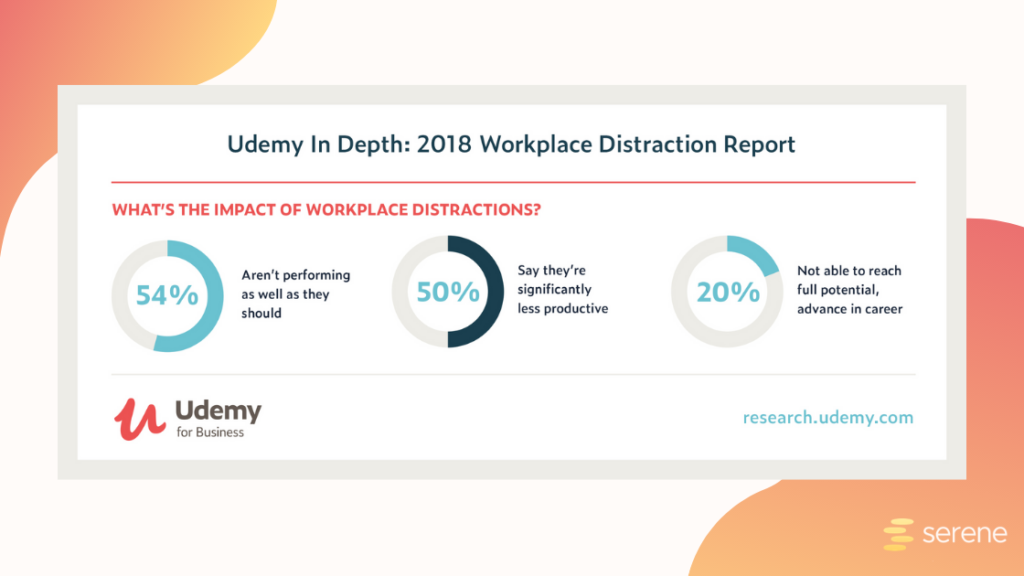
If you’re tired of chatty coworkers, needless meetings, and dinging social channels distracting you, then this post is for you. We all get distracted, but all is not lost when it comes to discovering how to regain your ability to focus.
Below, we’ll share the top distractions in the workplace and how you can eliminate them to learn how to be more productive at work.
1. Smartphones
Perhaps one of the world’s best inventions, smartphones can help productivity as well as sap efficiency levels. Phones are a top distraction culprit in the workplace. The Udemy Workplace Distraction study reported two-thirds of us are distracted by our phones for AT LEAST an hour daily. Yikes.
How to Stop the Distraction:
- Silence your phone – Keep your phone face down and silence it to keep noisy dings and rings from interrupting your workflow.
- Move your phone – If you can, move your phone away from your work space. Place it in another room, if possible. This will keep you from checking it more than necessary.
- Leave your phone at home – This option may not be possible in all professions, but if you can swing it, try doing it. It can be especially helpful if you have a pressing deadline to focus on.
2. Noise
Open-plan offices are nice in theory, but not so much for actually getting work done. Perhaps one of the most annoying distractions in the workplace, noise, can be an often unavoidable part of the work atmosphere. Whether it’s chatty coworkers, the copy machine, phones ringing, or customers coming and going, it may seem impossible to block out.
How to Stop the Distraction:
- Change work locations – If possible, relocate to a conference room with a door or a quieter space in your building. You may also ask if you can work remotely if you need extreme periods of quiet.
- Music – Classical and ambient music is noticeably better at improving focus. If you enjoy listening to music while you work, try some focus music.
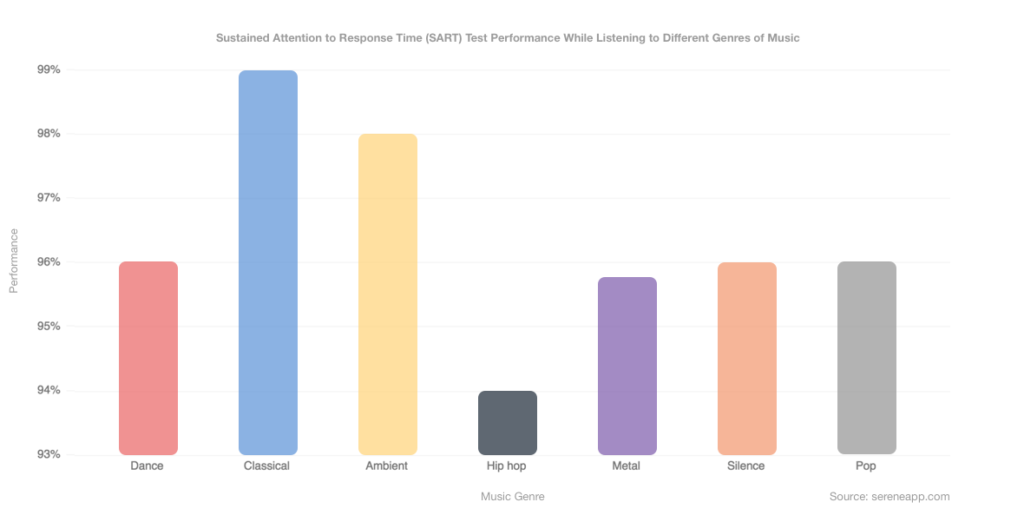
3. Email
If you’re like most employees, you send and receive a ton of emails daily. In fact, most workers spend 28% of their day checking email, according to a McKinsey analysis report. No surprise considering in 2018, 124.5 billion business emails were sent and received daily. Since you can’t just ignore your inbox, you have to learn to control the urge to check it.
How to Stop the Distraction:
- Work in offline mode – You can’t be distracted by emails if you’re not online. If you don’t need to use the internet for your work, consider logging off to get focused periods of work done without the temptation of web browsing.
- Check emails 2x daily – Dr. Kara Fasone, an Industrial and Organisational Psychologist advises being intentional with mail checking behaviour. “I recommend setting specific times to check emails or IMs, if possible,” she says. “I check my email at 10 am, 1 pm, and right as I’m wrapping up for the day.”
- Pause your inbox – Use an extension download like Inbox Pause for Gmail to stop mail temporarily. During this time, you won’t lose any emails, but instead, email will be on hold until you’re ready to open your inbox. You can set a timer to hold the email for a certain period, too.
4. Talkative Coworkers
Chatty coworkers are one of the hardest distractions to shake off, especially when you don’t want to come off as impolite. Since 90% of face-to-face interactions happen at coworkers’ desks, this distraction is tough to break. The proximity of desks is also proportionate to the number of times workers interact — and distract — one another.
How to Stop the Distraction:
- Close your door – When you have an office with a door, use it to your advantage to indicate you don’t want to be disturbed.
- Noise-cancelling headphones – No door? If you need quiet, pop on some headphones that block noise while communicating to your colleagues that you don’t want to be bothered.
- Minimise impromptu meetings – Set a firm rule with coworkers that you can discuss projects at length in scheduled meetings and send them your calendar link to set up times with you.
- Use a light – Using Serene’s PRO feature, you can indicate whether you’re busy or available to your colleagues by automatically turning an Internet-connected light (such as Philips Hue) red when you’re in deep work.
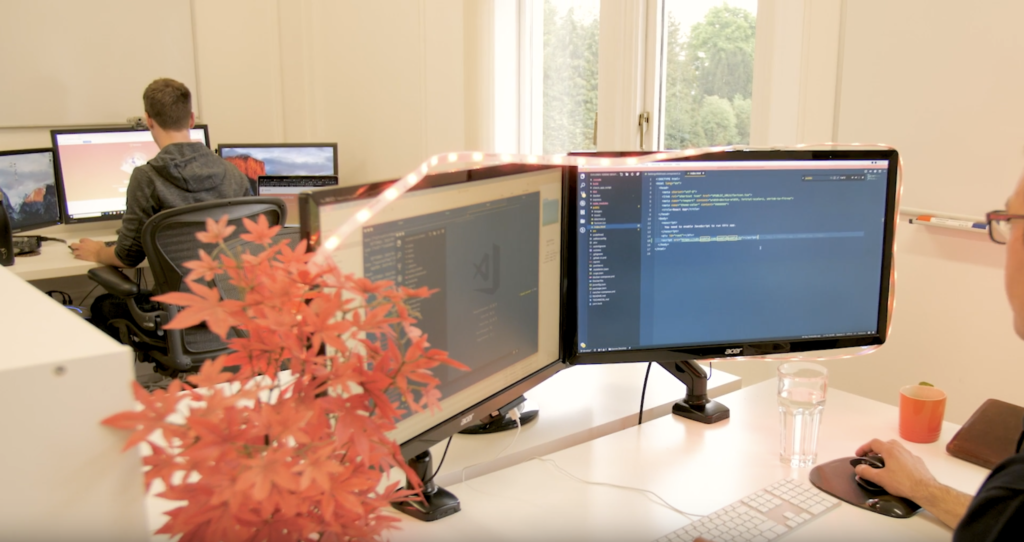
5. Clutter
Physical clutter can also clutter the brain. While this impacts all types of workers, if you’re a remote or at-home worker, clutter can especially cause your productivity to take a nosedive. It also negatively impacts other areas of your life, too. According to a 2016 Cornell University study, “stress triggered by clutter may also trigger coping and avoidance strategies, like eating junk food, oversleeping or binge-watching Netflix.”
How to Stop the Distraction:
- Take time to declutter daily – Before you leave work each day, take a few minutes to remove unwanted items and dispose of those. Old notes, food items, outdated materials, etc. should head to the rubbish bin.
- Put digital clutter in the cloud – Digitally, your computer can get just as cluttered, too. Trash items you no longer need and then back-up pertinent files to external hard drives or clouds.
6. Hunger
Do you get hangry? If so, plan ahead so you can feed your body and your brain to continue on with a productive workday. Decision-making is impaired when you’re hungry. Research proves it.
How to Stop the Distraction:
- Eat healthy snacks – To curb hunger between meals, don’t forget to pack nutritious foods to nosh on. These snacks ideally will have good fats, fibre, and protein. Unsalted nuts and nut butter on fruit are good options.
- Drink plenty of water – Sometimes dehydration can make you feel hungry. Drink a glass of water first. If the hunger pangs don’t vanish, grab some food.
7. Social Media
The ultimate distraction and contributor to mindless internet scrolling is social media. It’s addictive and keeps plenty of us from doing the meaningful work we need to focus on.
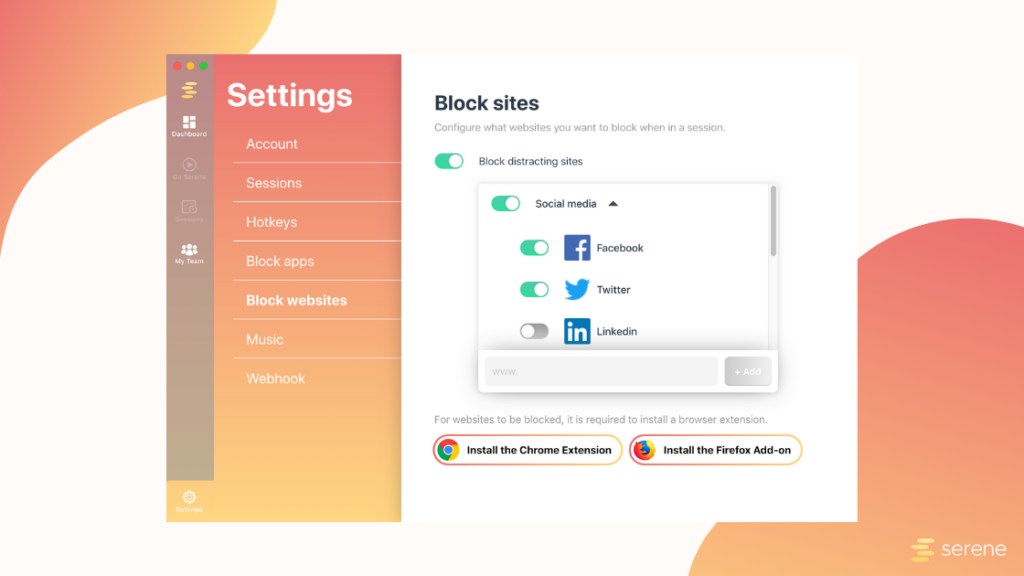
How to Stop the Distraction:
- Use a website blocker – Try a website blocker to silence social media.
- Close down ALL website browsers – If you can’t quite do a blocker just yet, try closing all web browsers while you work on the tasks at hand.
- Delete your accounts – This may seem extreme, but if your focus is seriously disabled due to social media scrolling, this may be your only solution. If you want to know how to be more productive at work, delete your social media accounts and record how your work output soars.
8. Unnecessary Meetings
There’s no bigger time waster than an aimless meeting. Time lost is never found, which is why meetings should have a solid purpose and clear agenda.
How to Stop the Distraction:
- Invite only the needed parties – If you’re hosting the meeting, only invite the pertinent parties. Use the “two pizzas” rule. If you can’t feed the meeting group with two pizzas, you have too many invitees.
- Stick to the agenda – Create an agenda. If it’s not on the agenda, have a note-taker make a memo to include it on the next meeting agenda. This avoids tangents and never-ending meetings.
9. Long Breaks
Taking longer-than-necessary breaks is dawdling at its finest. Even if you don’t want to get back to work, taking longer breaks only postpones the inevitable — and leaves an even bigger pile of work waiting.
How to Stop the Distraction:
- Allow yourself to look forward to breaks – Work diligently focusing on a single task for about an hour. Then, reward yourself with a short break at the end of it and make sure you clear your head and prepare for the next task.
- Split up your break – When you break after 50 minutes or so of work, you’ll need a few moments to regroup before diving back in. Split up your breaks throughout the day to avoid taking too lengthy of a break once a day.
10. Multitasking
Despite the fact that many people think they’re excellent multitaskers, neuroscience proves our brain actually still has to start and stop processes. Doing so can cost you microseconds that you aren’t even aware of!
How to Stop the Distraction:
- Use the 50-minutes focus technique – Set a timer for 50 minutes of uninterrupted work time. Focus on a single task. Even if you think of another task you need to do in the middle of it, ignore the urge to tackle it. You can work on it in your next focused work session.
- Set a goal – When you do decide to get into work mode, it’s important to set a goal. Serene can help you decipher which goal is most important to tackle for the day while blocking other distractions that may encourage multitasking.
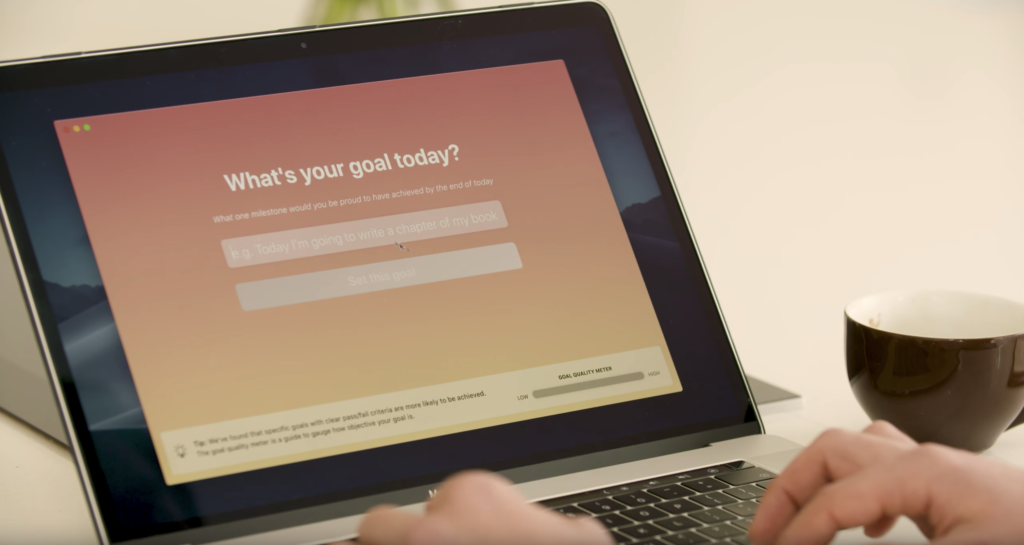
11. Workplace Changes
Change is hard to get used to in most situations. When there’s a shift of leadership, policy, work processes, etc. it can change the workplace dynamic quickly. As distracting as this can be, it’s part of the workforce.
How to Stop the Distraction:
- Focus on the positive – Change can be a good thing. Whether it’s new leadership or policy tweaks, a positive outlook on how it can make the workplace better can make it easier to accept and get into the flow.
- Give it time – Even if you may not see it right away, change can shift the workplace culture in a good way. Set a personal timetable of when you’d like to be comfortable with the adjustment period.
12. Gossip
Gossip is a huge time waster. In fact, one study found 65 hours of work productivity is lost annually thanks to gossip. When it comes to rewiring your brain to learn how to be more productive at work, avoiding excess gossip can save you time and your sanity.
How to Stop the Distraction:
- Change the subject – Learn to master the art of switching gears when someone pulls you into gossip. If someone mentions a coworker got wild at a party over the weekend, instead ask, “What else did you do over the weekend? Here’s what I did…”
- Move away – If you overhear gossip, you can walk away. It reduces the temptation to get drawn into negative conversation.
13. To-do Lists
A to-do list is only valuable if it helps the creator focus and get things done properly and on time. To-do lists that get ignored, rollover tasks repeatedly, etc. aren’t especially helpful.
How to Stop the Distraction:
- Plan ahead – Get an actual productive to-do list going. It allows you to plan ahead, batch tasks, and stay focused.
- Do what works for you – Instead of following the latest trend of how to properly create a task list, do what works for you. It will stick better.
14. Personal Needs
It can be challenging to separate your personal and professional lives, especially if you’ve got a lot going on at home. Personal crises like dealing with an illness, bad health news, or caring for ailing parents can take up a lot of brain space and emotional energy.
How to Stop the Distraction:
- Keep your employer in the know – You’ll feel a lot better if your boss has a solid understanding of what you’re going through. They also may be able to provide flexibility for days when you need a little extra time off.
- Ask about remote work – If you’re able to do it in your position, remote working is a great way to tackle personal needs and professional work. Ask management if it’s an option for you. Remote working has its challenges, but there are some great tips and tools to overcome those.
15. Procrastination
Are you an excellent procrastinator? Unfortunately, it’s not a trait to be proud of in the workplace. By postponing urgent projects, you let stress and pressure build up that may cause you to do lower quality work. While it looks different for everyone, procrastination may include daydreaming, doodling, mindlessly creating to-do lists, online shopping, etc.
How to Stop the Distraction:
- Knock out the hard tasks first – Tackle the most difficult projects first so those are off your plate. The rest of the day will feel a lot easier and you’ll be less likely to procrastinate.
- Time yourself – If you have five hours, you will fill up every minute of those five hours spreading out one project. If you know it shouldn’t take as long, challenge yourself by putting on a timer and getting it done in less time.
Stay on Track
It’s safe to say that most distractions in the workplace are self-inflicted.
Luckily, you can also boost your productivity with habits that are positive game-changers. Distractions in the workplace like the ones listed above keep you from doing your best work, advancing, and achieving your goals.
A few final tips on how to be more productive at work:
- Set timers for focused work periods.
- Focus on what matters. Be present.
- Create a daily habit of focused work.
No matter how disciplined you are, distractions are going to happen. It’s how you handle those daily distractions that has the greatest impact on your overall output and work quality. Plan for distractions and incorporate elimination techniques to stay on track. You might just be surprised how well it works.
What are the biggest distractions for you at work? How do you curb the desire to get distracted? Let us know in the comments below!



